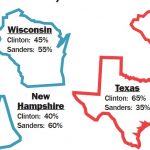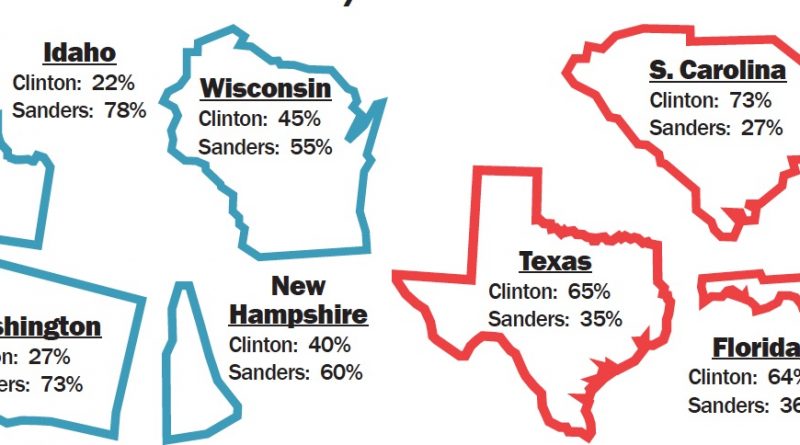The North/South Divide
In presidential elections, we don’t just learn how candidates plan on running the country. We also learn how our fellow voters think the country should be run. Elections are not just a showcase for those who are campaigning but also for those who are participating. By observing the results of recent Democratic presidential primaries and caucuses, it became clear to me that the way we view a candidate, a platform, or a paradigm are set by what we think—and what we think is heavily influenced by where we live.
Hillary Clinton remains the top choice for Democrats while Bernie Sanders’ campaign is still hoping for a repeat of Clinton’s 2008 loss. But there is one thing the two have in common: they both know that a simple map of America can be a better predictor of voter results than any poll. A liberal north and a conservative south can project where they should campaign hard and where they might not even bother.
According to Politico, there was hardly a single southern state where Clinton was not able to defeat Sanders by more than 20%. In Florida, she beat Sanders 64% to 36%. In Texas, it was 65% to 35%, in South Carolina 73% to 27%. While watching coverage of the primaries in those states, I felt no need to change channels because I knew all the television networks were confident in their early projections. In the meantime, the North was burning up for the Bern. Sanders won with 73% in Washington, 78% in Idaho, and 60% in New Hampshire. Clearly the North wants Sanders to be the face of this country!
If we look at a map closely and examine every study extensively, we can rely on ourselves when it comes to calling the race for Sanders and Clinton.
The success of Sanders in the North reminds us of what is special about this region. These states tend to be heavily influenced by the concerns of the working class, due to the size and scope of their unions. Many northern states face oceans, where immigrants can enter the country and where social change is a constant in residents’ lives. In Washington, we have Seattle, whose municipal minimum wage is one of the highest in the country. In California, we have a governor who made his state the first in the country to commit to a $15 per hour statewide minimum wage. In Michigan, we have a lot of big university campuses where students worry about paying back their student loans.
In the South, voters seem to be more resistant to social change. The willingness to change is what pushes the North to the left. But in the South, change isn’t often a popular thing. Due to the reputation of the NRA, many southern senators voted to block Barack Obama’s gun safety proposal in 2013. The strained relations between the police and minority communities reflect the living legacy left by the era of slavery and the era of racism. Lastly, the southern states tend to face countries where immigrants enter illegally, such as Cuba and Mexico.
During MSNBC’s primetime coverage of the Wisconsin primaries (where Sanders won over 55% of the vote) NBC News political director Chuck Todd said that Clinton is probably the least progressive Democratic candidate leading the party’s nomination. For Democratic voters in the South, Clinton may be their safest choice if they don’t want America to be a nation of quick and aggressive change. For Democratic voters in the North, Sanders is the ideal choice.
I am not trying to stereotype anybody. But the map shows what the map shows. We claim to be the United States of America but it is easy to see that division among us still exists.






